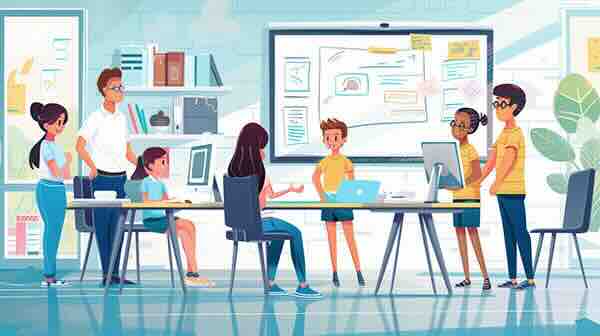AI is changing classrooms, and one teacher, Lindsay Ballew from Georgia, found a way to use it to spark curiosity in her students’ science lessons.
Lindsay teaches middle school science and was looking for a fresh approach to get her students excited about scientific discovery. Like many teachers, she had noticed that some students were disengaged, while others were only passively absorbing information. She wanted a way to bring more interactive learning into her classroom and encourage deeper questioning and exploration. That’s when she turned to AI.
Using AI To Engage Her Students
Lindsay introduced her students to AI-powered simulations to study ecosystems. The class was exploring how environmental changes affect different species, and she used a tool called “AI for Earth” to allow students to create their own virtual ecosystems. This platform lets students simulate environmental changes like temperature increases, deforestation, or pollution, and watch how their ecosystems responded in real time.
Not Just Another Lecture
Her students could see the immediate consequences of their choices, which led to more questions. Why did certain species thrive while others went extinct? How do small changes ripple through an ecosystem? By observing the results of their simulations, they began to form their own hypotheses and seek out answers.
Lindsay also encouraged students to use AI to predict outcomes before running simulations. For example, they’d input certain variables like temperature changes and AI would give them predictions based on data. The students would then test these predictions through their simulations, fostering a sense of scientific inquiry. They were learning to trust data but also how to think critically about its limitations.
Beyond the science lesson, AI helped students develop problem-solving and computational thinking skills. It also built their confidence in navigating technology, which will be vital in their future careers.
The Curiosity It Sparked Made the Difference
Students began staying after class to tweak their ecosystems, asking Lindsay for additional resources to learn more about environmental science and AI. What started as a lesson on ecosystems evolved into a broader conversation about science, technology, and real-world applications.
Lindsay found that AI not only enhanced her teaching but also reignited her students’ desire to explore the world around them. By giving them control over the learning process, she fostered a deeper engagement in the subject matter.
AI may still be new in education, but teachers like Lindsay are showing how it can be a powerful tool to inspire curiosity and lifelong learning in the classroom.
